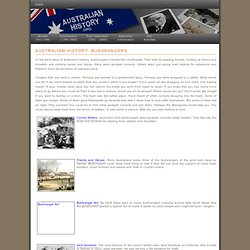

First Fleet. This article is about the British colonial fleet.

For the United States Navy unit known as the First Fleet, see United States First Fleet. The First Fleet entering Port Jackson on 26 January 1788 by E. Le Bihan The First Fleet is the name given to the 11 ships which left Great Britain on 13 May 1787 to found a penal colony that became the first European settlement in Australia. The fleet consisted of two Royal Navy vessels, three store ships and six convict transports, carrying more than 1,000 convicts, marines and seamen, and a vast quantity of stores. History[edit] Background and planning[edit] British convicts were originally transported to the Thirteen Colonies in North America, but after the American Revolutionary War ended in 1783, the newly formed United States refused to accept further convicts.[1][2][3] Ships of the First Fleet[edit] [edit] The First Fleet included two Royal Navy escort ships, HMS Sirius and HMS Supply.
Convict transports[edit] Food and supply transports[edit] [edit] Ancient Australian History. In the early days of Australia’s history, bushrangers roamed the countryside.

They lived by stealing horses, holding up farms and travelers and robbing banks and stores. Many were escaped convicts. Others were just young men looking for adventure and freedom from the boredom of everyday work. Imagine that you were a convict. Perhaps you worked in a government gang. Convict Bolters: Australia's first bushrangers were escaped convicts called 'bolters' They fled into the bush and survived by stealing from settlers and travellers. Friends and Heroes: Many Australians today think of the bushrangers of the gold rush days as heroes. Bushranger Act: By 1830 there were so many bushrangers roaming around New South Wales that the government passed a special Act to make it easier to catch people who might be bush- rangers.
Jack Donohue: The most famous of the convict bolters was Jack Donahue, an Irishman who arrived in Sydney in 1825, aged eighteen. Ancient Australian History. After a long trek on foot or horseback by coach or dray from Sydney or Melbourne, new miners were thankful and excited when they reached the goldfields.

On the larger fields they saw hundreds or even thousands of tents clustered around creeks or near the site of earlier discoveries. There were horses and bullocks, wagons and carts and everywhere people bustling around, digging, panning, washing gravel, moving mounds of dirt or gently rocking their cradles from side to side. New miners soon realised, however, that the goldfields were not as attractive to live in as they looked from a distance. At Bendigo, for example, up to 40,000 people lived close together in tents. They did not have enough water and their toilets were simply holes in the ground. Miners worked hard day after day and often could afford neither the time nor the money to buy good food.
The first diggers lived in tents which they brought with them to the goldfields.